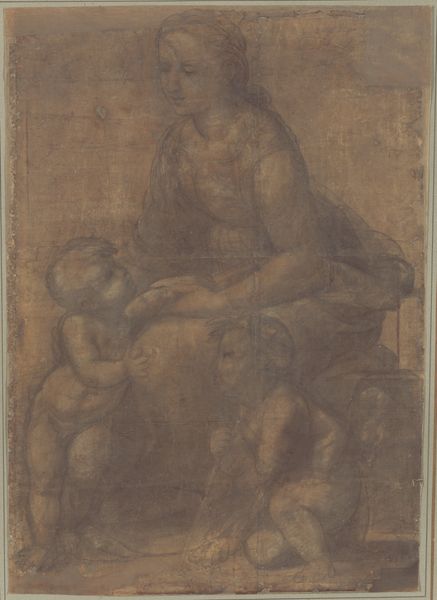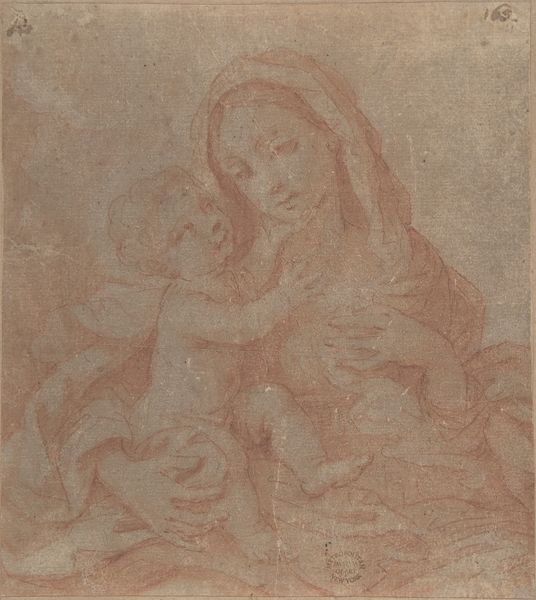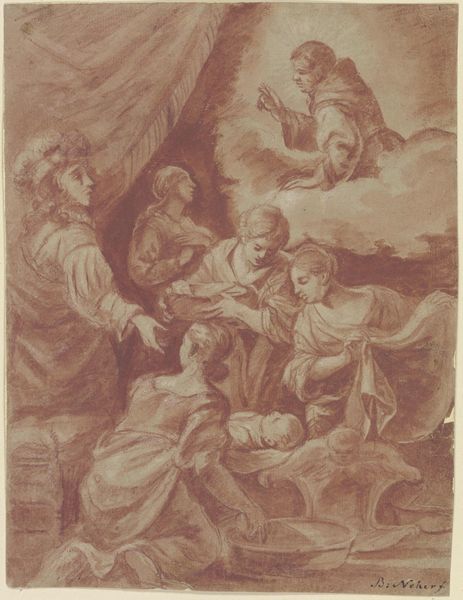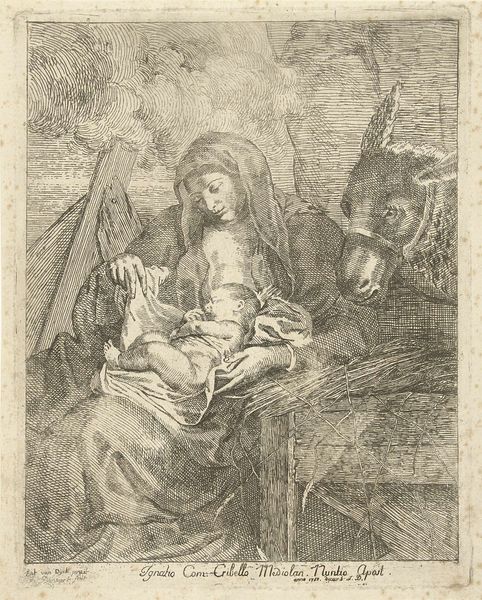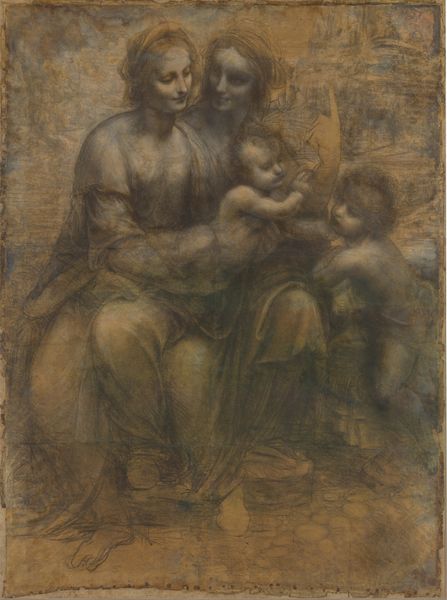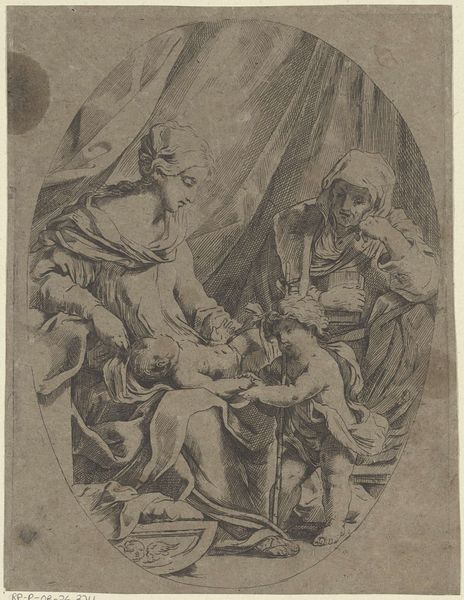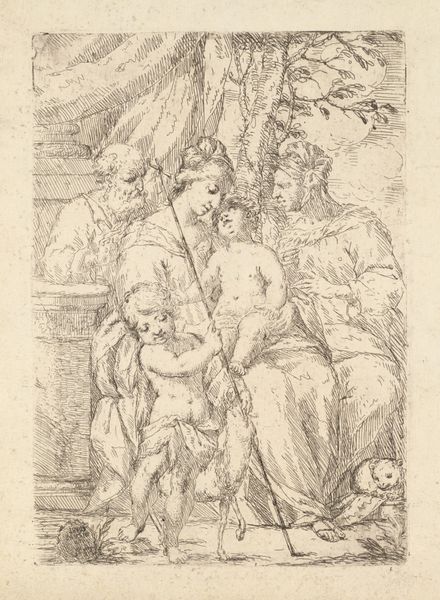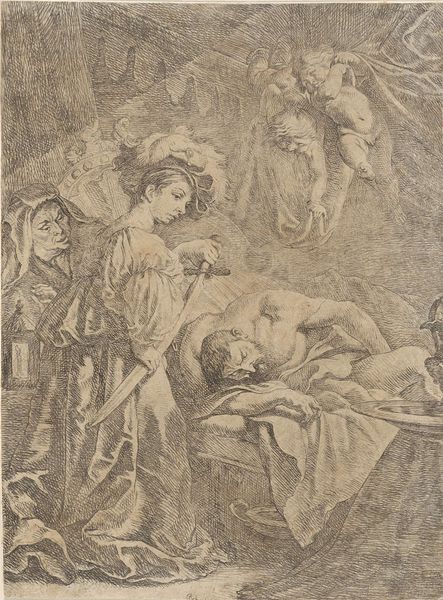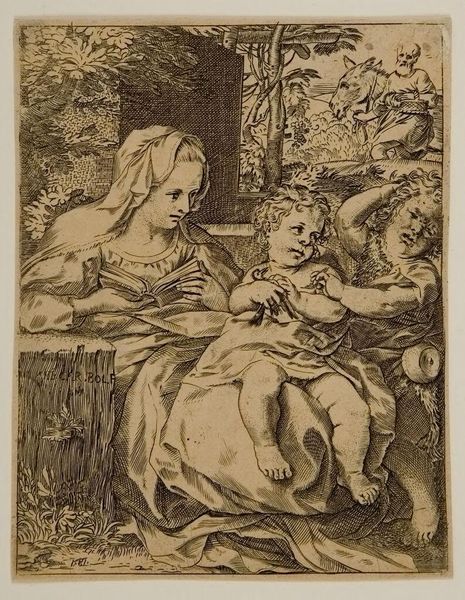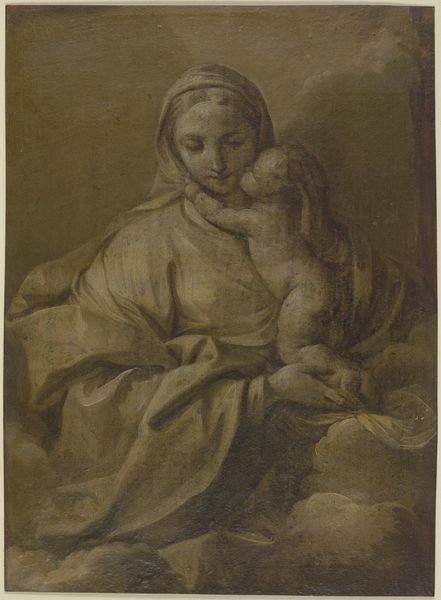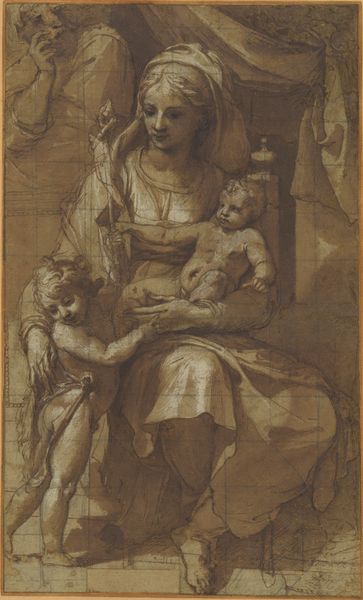
The Virgin and Child with Saint Elizabeth and the Infant John the Baptist c. 18th century
0:00
0:00
drawing, print, paper, pencil
#
portrait
#
drawing
# print
#
figuration
#
paper
#
11_renaissance
#
pencil drawing
#
pencil
#
italian-renaissance
Dimensions: 336 × 280 mm
Copyright: Public Domain
Curator: Welcome. Before us, we have an 18th-century print, “The Virgin and Child with Saint Elizabeth and the Infant John the Baptist,” after a work attributed to the Renaissance master Raphael. Editor: My first impression is one of understated tenderness. The pencil drawing exudes a sense of familial warmth, even through the somewhat faded lines. It feels remarkably intimate for such a classically rendered subject. Curator: Indeed, the composition focuses on a tightly knit grouping of figures. Note the pyramidal arrangement, a classical hallmark, lending stability and balance to the scene. Raphael’s skill lies in harmonizing the figures' forms with a gentle dynamism through contrapposto and subtle gestures. Editor: Considering the period of origin, one can analyze how Raphael navigates prevalent social norms through his subject. The relationship between Mary and Elizabeth can be further investigated through their status as mothers and how those relationships translate within the patriarchal limitations. Curator: The linear precision is noteworthy. The delicacy with which each figure is rendered highlights the subtle variations in texture and tone, particularly evident in the drapery and facial features. The implied depth and volume speak volumes about the artist’s technical capabilities. Editor: And, while we appreciate the masterful execution, we should acknowledge that it's from the 18th century. A time when wealthy European men had access to early prints such as these. One could read into this print a visual validation of a power structure where elite members of society gaze down on the iconic and somewhat sacralized image of mothers and children. Curator: While those power structures are definitely worth analyzing within their proper cultural and temporal contexts, one must concede that this print masterfully reflects the spirit and classical aesthetic valued during the Renaissance. Editor: It's impossible to deny the talent that influenced it and how images like this reinforce conventional roles that impacted the treatment of real women and their representation in the social sphere. Curator: Ultimately, examining this piece allows us to examine and understand the aesthetic, thematic, and technical qualities it offers us, as well as to consider the piece’s more intricate complexities, making it that much richer for its ability to be approached through myriad avenues of inquiry. Editor: Yes, it challenges us to analyze visual culture as active participants instead of passive viewers. And that approach gives us power over art.
Comments
No comments
Be the first to comment and join the conversation on the ultimate creative platform.
